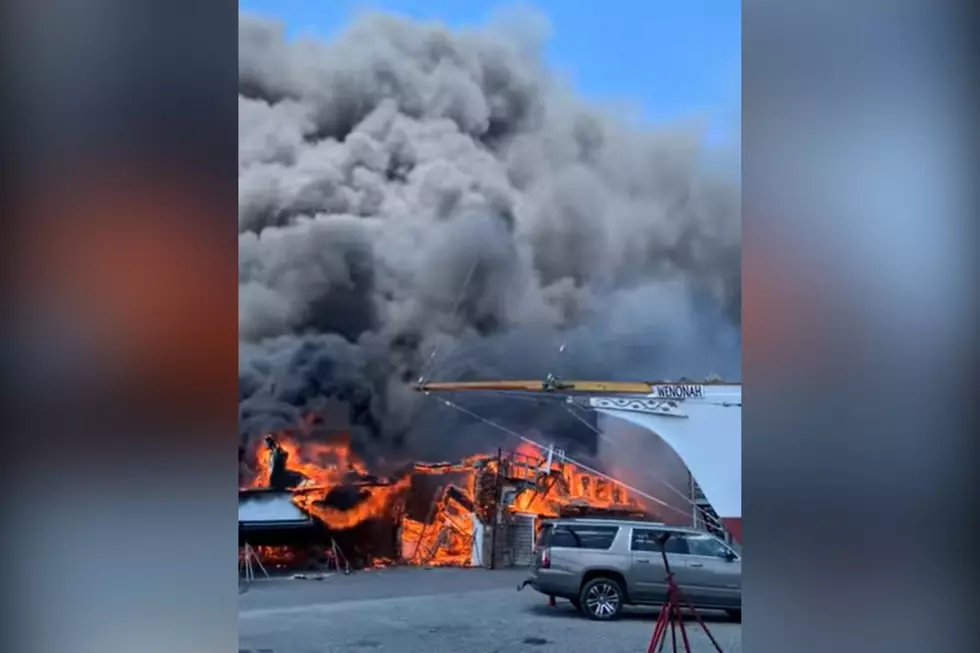
Mattapoisett Boatyard Fire Ruled Accidental
The cause of the massive fire that destroyed much of the Mattapoisett Boatyard on August 19 has been determined and the fire has been ruled accidental.
According to a joint release from Mattapoisett Fire Chief Andrew Murray and State Fire Marshal Peter Ostroskey, it has been determined that the fire was most likely “caused by the ignition of gasoline vapors during the replacement of a boat’s gas tank.”
It took more than 100 firefighters over four and a half hours to get the inferno under control. The fire reached six alarms and destroyed six buildings, 47 vehicles and 14 boats, according to the release.

According to investigators, the fire started inside a building at 32 Ned’s Point Road, where a worker had been replacing a boat’s gas tank.
“Investigators believe that a spark ignited gasoline vapors during this process, causing an explosion and fire that seriously injured the worker, an adult male,” the release stated. “The fire was fed by winds of up to 25 miles per hour coming in off the water and spread to nearby buildings, vehicles, and boats.”
In addition to the worker suffering injuries, Murray and Ostroskey said three firefighters were transported from the scene for injuries related to smoke inhalation and heat exhaustion. The firefighters have been released but the boatyard worker remains hospitalized. He is expected to survive.
The worker has been identified through a fundraising campaign as Phil Macomber, an employee of the Mattapoisett Boatyard for nearly 20 years. The campaign, which originally set to raise $30,000 to help with his medical care, had raised over $132,000 as of this writing.
“Our hearts go out to the worker who was badly injured during last week’s fire and the family business that’s been a part of our community for 60 years,” Murray said. “On behalf of the Town of Mattapoisett, I also want to recognize the efforts of our firefighters and our brother and sister firefighters and chiefs from across the region who rushed in to help. They defied the danger of a massive, wind-driven fire to prevent it from spreading further into the community and putting more people at risk.”
“We’re extremely fortunate that Friday’s fire didn’t cause more injuries or worse,” Ostroskey said. “Nearly 900 fires have started with gasoline in Massachusetts over the past 10 years, causing nine deaths and almost $20 million in damages. Many of us use gasoline in our daily lives, but we can’t lose sight of the fire and explosion hazard associated with it. Gasoline vapors can travel a great distance to an ignition point, especially indoors.”
LOOK: The most expensive weather and climate disasters in recent decades
KEEP READING: What to do after a tornado strikes
More From WBSM-AM/AM 1420









